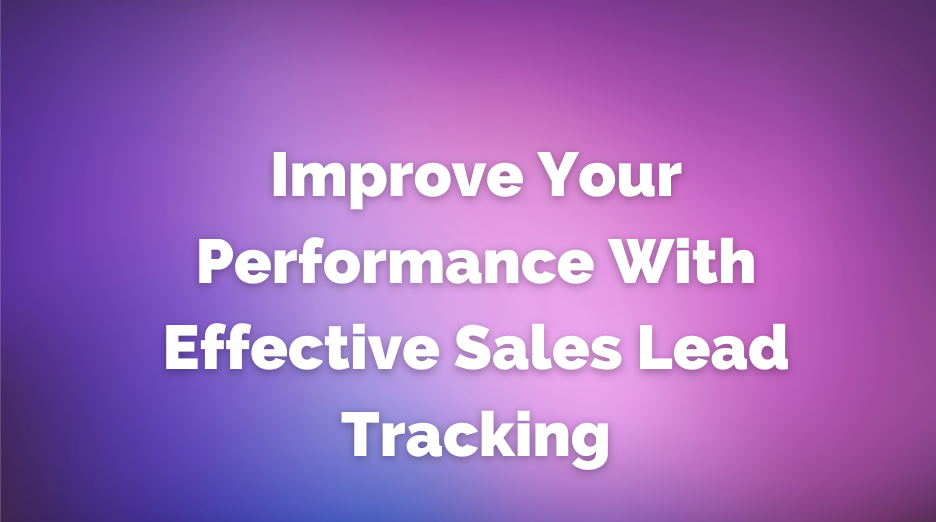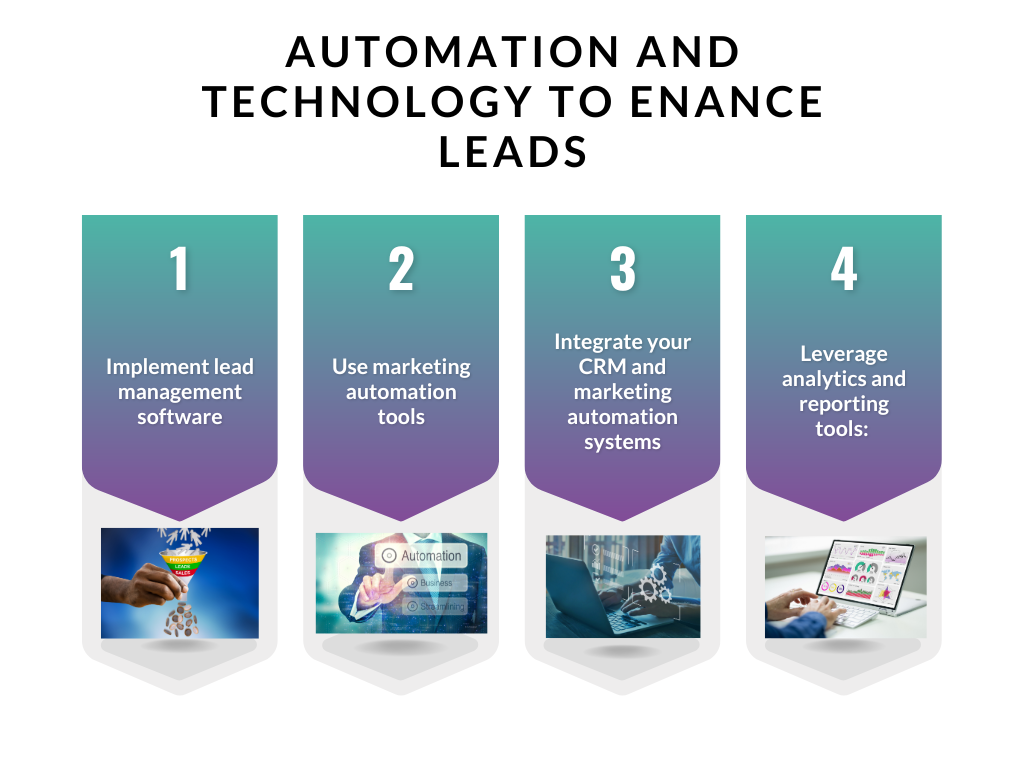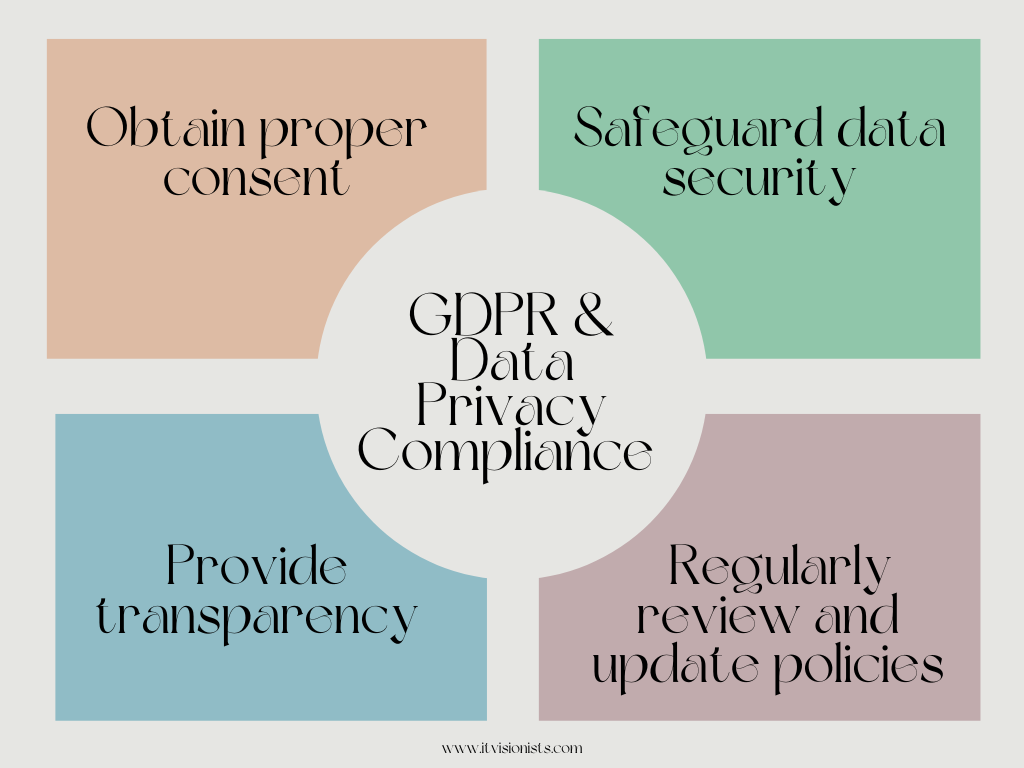
Sales lead tracking is a powerful tool that boosts sales performance by efficiently capturing, organising, and managing leads. It improves lead nurturing, conversion rates, and sales strategies. By implementing lead tracking systems, businesses can capture valuable information about potential customers and ensure no leads are lost. This data-driven approach allows for better resource management and targeting high-potential leads, ultimately increasing the chances of conversion.
Importance of Sales Lead Tracking For Businesses
Sales lead tracking provides insights into lead behaviour, identifies opportunities, and enables targeted sales goals and strategies. It deepens the understanding of prospects’ preferences, needs, and buying patterns. This enhances customer engagement and builds strong relationships through personalised interactions. Storing relevant information allows for a more personalised experience, increasing trust and loyalty. Additionally, lead tracking ensures timely follow-ups, demonstrating attentiveness and professionalism.
How Sales Lead Tracking Helps Improve Efficiency?
Lead tracking enhances efficiency by centralising lead information, making it easily accessible and organised. It eliminates the need to search through multiple sources or rely on scattered notes.
Additionally, lead tracking promotes collaboration among sales teams, streamlining workflow and increasing efficiency.
Moreover, a sales tracking system enables data-driven decision making, providing valuable insights into lead interactions, conversion rates, and sales pipeline performance. This empowers sales teams to prioritise their efforts and concentrate on high-quality leads.
Key Components Of An Effective Sales Lead Tracking System
Here are the some main components that need to be considered for effective sales lead:
![]()
Lead Capture And Generation
Having multiple lead sources is crucial for a consistent flow of potential leads. Diversifying sources reduces reliance on one channel and captures a larger pool of customers.
Lead capture through website forms allow visitors to express interest in a product or service directly on the company’s website. This method captures contact information for follow-up.
Social media platforms engage with the target audience, share content, and drive traffic to websites. Direct interaction with leads makes it easier to convert them into customers.
Events provide face-to-face or virtual connections with prospects actively seeking information. Participating in events generates leads by showcasing expertise and building relationships.
Referrals from satisfied customers or partners have a higher conversion rate. They are valuable additions to the sales pipeline.
Lead generation techniques:
- Content marketing: Sharing valuable content establishes expertise and builds trust.
- Email campaigns: Nurturing leads over time with personalised content keeps the brand top-of-mind.
- SEO: Optimising website content helps rank higher in search results and drives organic traffic.
- Paid advertising: Reaching a wider audience and targeting specific demographics generates immediate results.
By utilising these techniques, businesses capture leads from various channels and increase their chances of converting them into customers. Each method contributes to building a robust sales pipeline.
Lead Nurturing And Management
Lead scoring is a process that evaluates and assigns values to leads based on their attributes and interactions with a company. This helps prioritise leads for nurturing and sales efforts. The process involves assigning scores to lead attributes and tracking their interactions with the company’s website, emails, and marketing materials.
The first step in lead scoring is determining the most important criteria for your business, such as engagement level, fit with target audience, and likelihood to convert. Then, assign point values to each attribute or interaction.
For example, a lead who visits the pricing page receives more points than a lead who opens an email. Leads with higher scores indicate more interest and engagement, making them more likely to convert. These leads can be passed on to the sales team for personalised follow-up.
Leads with lower scores may require additional nurturing through lead nurturing campaigns. These campaigns provide valuable content, address pain points, and guide leads through the buyer’s journey. Content is tailored to different stages of the journey, addressing challenges and positioning the company as a trusted advisor.
Throughout the process, track and analyse lead interactions to refine scoring criteria and adjust nurturing strategies.
CRM Integration And Automation
Elaborate on the advantages of integrating the sales lead tracking system with a Customer Relationship Management (CRM) platform, like improved data visibility, streamlined communication, and enhanced collaboration.
Highlight the time-saving benefits of automating routine lead tracking tasks, such as lead assignment, follow-ups, and lead status updates, freeing up sales representatives to focus on high-value activities.
Selecting The Right Sales Lead Tracking Software
Evaluating Business Needs And Objectives
Understanding the sales process and pain points is crucial to determine how lead tracking software can improve efficiency. Analysing the current process helps identify areas of improvement. Setting clear objectives for implementing the software maximises its benefits, such as increasing conversion rates and streamlining lead management. Defining objectives also helps measure success and make necessary adjustments.
Features To Look For In Sales Lead Tracking Software
To efficiently manage leads, software needs key features: lead capture forms collect contact info, lead tagging categorises leads, and data segmentation groups leads based on characteristics.
Automated follow-up sequences, personalised nurture campaigns, and lead scoring save time and effectively nurture leads. Follow-up sequences ensure timely communication, nurture campaigns personalise messaging, and lead scoring prioritises efforts.
Robust reporting and data analytics provide insights into lead performance. Reporting tracks progress and measures marketing effectiveness, while data analytics uncover patterns for better lead generation and nurturing strategies.
Popular Sales Lead Tracking Software Options
Below a list of top popular sales lead tracking software options:
Salesforce
Salesforce is a leading CRM platform known for its robust features and capabilities. It offers lead tracking, capture mechanisms, lead scoring, and automation tools to streamline sales processes and improve efficiency.
HubSpot Sales Hub
HubSpot Sales Hub is an inbound sales software that integrates with HubSpot’s marketing and CRM tools. It provides lead capture, activity tracking, and automated follow-ups to enhance productivity and increase lead conversion rates.
Pipedrive
Pipedrive is a CRM and sales pipeline management tool that focuses on lead tracking and sales team efficiency. Its visual sales pipeline, lead scoring, and automated follow-ups help manage leads effectively.
Zoho CRM
Zoho CRM is a cloud-based CRM platform known for its extensive lead tracking capabilities and affordability. It offers lead capture mechanisms, lead nurturing workflows, lead scoring, and robust reporting features for effective lead management and sales growth. Based on Zoho CRM Reviews, it is best for small businesses looking to implement their first unified CRM solution.
Best Practices For Sales Lead Tracking
Creating An Effective Lead Tracking Strategy
To create an effective lead tracking strategy, consider the following:
![]()
- Clearly define your lead qualification criteria: Determine what constitutes a qualified lead for your business and establish specific criteria that sales and marketing teams can use to identify and prioritise leads.
- Implement a standardised lead management process: Develop a consistent process for capturing, assigning, and tracking leads throughout their lifecycle. This ensures that leads are properly followed up on and no opportunities are missed.
- Utilise a centralised CRM system: Invest in a customer relationship management (CRM) system that allows you to track and manage leads effectively. This centralises all lead information, making it easier to monitor progress and measure results.
- Regularly review and analyse lead data: Continuously evaluate your lead tracking efforts by analysing key metrics such as conversion rates, lead sources, and sales cycle length. This helps identify areas for improvement and optimise your lead generation strategies.
Sales And Marketing Alignment For Lead Tracking Success
To achieve successful lead tracking, it is crucial to align your sales and marketing teams. Here’s how:
![]()
- Establish open communication channels: Foster regular communication between sales and marketing teams to ensure they are aligned on lead definitions, goals, and expectations.
- Collaborate on lead nurturing strategies: Work together to develop targeted content and campaigns that address the needs of different buyer personas at various stages of the sales funnel.
- Share feedback and insights: Encourage both teams to share feedback and insights from their interactions with leads. This helps refine lead scoring models and improve the overall lead tracking process.
- Implement closed-loop reporting: Create a feedback loop where sales provides feedback on the quality of leads generated by marketing. This enables marketing to refine their lead generation efforts and deliver higher-quality leads.
Automation And Technology
Leveraging automation and technology can greatly enhance your lead tracking efforts. Consider the following:

- Implement lead management software: Invest in a robust lead management software that automates lead capture, assignment, and tracking processes. This streamlines workflows and ensures leads are properly managed.
- Use marketing automation tools: Utilise marketing automation platforms to automate lead nurturing campaigns, track engagement, and score leads based on their interactions with your content.
- Integrate your CRM and marketing automation systems: Connect your CRM system with your marketing automation platform to ensure seamless data flow between sales and marketing teams. This enables better lead tracking and improves overall efficiency.
- Leverage analytics and reporting tools: Utilise analytics and reporting tools to gain insights into lead behaviour, campaign performance, and ROI. This data-driven approach helps optimise lead tracking strategies and drive better results.
GDPR And Data Privacy Compliance
When it comes to lead tracking, it is essential to comply with GDPR and data privacy regulations. Here’s what you need to consider:

- Obtain proper consent: Ensure that you have obtained explicit consent from individuals before collecting and processing their personal data for lead tracking purposes.
- Safeguard data security: Implement appropriate security measures to protect the personal data you collect. This includes encryption, access controls, and regular data backups.
- Provide transparency: Clearly communicate to leads how their data will be used and stored. Make sure they understand their rights regarding data access, rectification, and erasure.
- Regularly review and update policies: Stay up to date with evolving data protection regulations and regularly review and update your privacy policies and procedures to ensure compliance.
By following these best practices, you can establish an effective lead tracking strategy, align your sales and marketing efforts, leverage automation and technology, and ensure compliance with GDPR and data privacy regulations.
How To Overcome Common Challenges
Lead Leakage And Lost Opportunities
Causes of lead leakage and lost opportunities in sales lead tracking include poor management and lack of follow-up. To prevent leakage and maximise revenue, here are some actionable strategies:
- Implement a robust lead management system: Use CRM software to track and manage leads effectively.
- Assign clear ownership: Define roles and responsibilities for lead management and assign team members accordingly.
- Establish a lead scoring system: Prioritise leads based on potential value to increase conversion rates.
- Automate lead nurturing: Utilise marketing automation tools for personalised email campaigns and automated follow-ups.
- Provide regular training and coaching: Continuously train sales teams on effective lead management techniques.
- Analyse and optimise the sales process: Regularly analyse data and adjust strategies to improve conversion rates.
By implementing these strategies, you can prevent leakage, improve management, and increase revenue potential.
Managing And Prioritising A Large Number Of Leads
Managing a high volume of leads can be challenging for businesses. The quantity of leads can be overwhelming without proper systems in place. Inadequate lead prioritisation can result in wasted time and resources on leads that are less likely to convert.
To efficiently manage and segment leads, businesses can implement the following tips:
- Implement lead scoring based on demographics, engagement level, and buying intent.
- Use automation tools like CRM software or marketing automation platforms.
- Define clear qualification criteria such as budget, timeline, and decision-making authority.
- Regularly review and update lead data to maintain accurate segmentation.
- Nurture leads through personalised content tailored to different segments.
- Continuously analyse and optimise lead management processes by reviewing key metrics.
By implementing these techniques, businesses can effectively manage and segment leads, increasing the likelihood of converting leads into customers and improving conversion rates.
Balancing Automation With Human Touch In Customer Interaction
Automation in customer interactions has benefits and challenges. It saves time and resources, but risks losing the personal touch. To strike the right balance:
- Segment leads: Use automation for initial contact, but prioritise human interactions for high-value leads.
- Customise automated responses: Make them feel personal by incorporating the lead’s name and addressing their needs.
- Use chatbots strategically: Handle routine inquiries, but provide an option to connect with a human representative.
- Train your team: Equip them with skills like active listening and problem-solving.
- Continuously evaluate and optimise: Review feedback and data analytics to improve the customer experience.
By finding this balance, businesses can leverage automation while still fostering meaningful connections with potential customers.
Get The Best Sales Lead Tracking System
At IT Visionists, we specialise in tailoring SaaS Sales CRM solutions to meet your unique business needs. Our expertise lies in implementing Sales Lead Tracking Systems like HubSpot Sales, Zoho CRM, and PipeDrive, simplifying lead management, reducing human errors, and supercharging sales team efficiency for unprecedented sales growth.
Benefits:
- Streamlined Lead Management: Our CRM solutions ensure all leads are efficiently tracked, organised, and prioritised, boosting your sales team’s productivity.
- Minimised Human Error: With automated processes and intelligent data handling, we eliminate human errors, ensuring accurate and reliable customer information.
- Unleashed Sales Team Efficiency: Empower your sales team with tools that enhance collaboration, task automation, and insightful analytics for unparalleled performance.
Drive Sales Growth Today – Choose IT Visionists as Your CRM Partner!
Contact Us today and transform your sales process with our tailored CRM solutions. Let’s accelerate your sales growth together!
